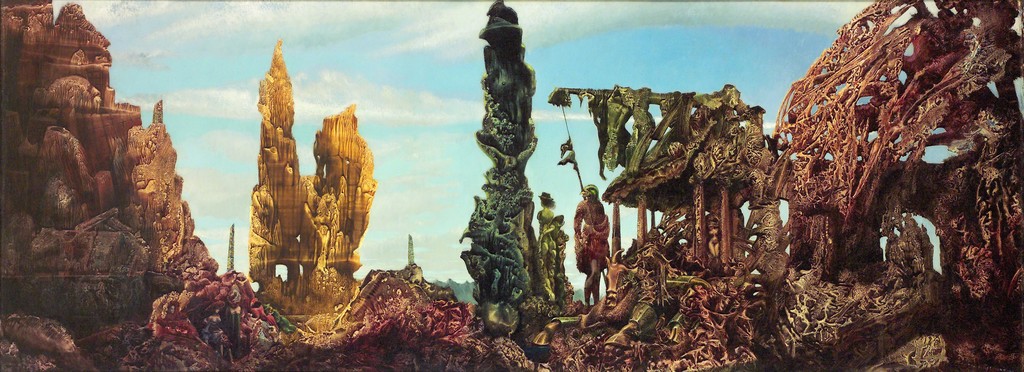Never having taken Art, mark making is a new concept to me. Hence, I embarked on a research to find out more about mark making.
What is Mark Making?
To describe different lines, patterns and textures we create in a piece of art.
Automatic Mark Making Techniques
Creating art by suppressing conscious control and allowing the unconscious mind to take over the creative process.
Examples of Automatic Techniques:
Decalcomania –a piece of paper or glass is laid over a painted surface and then removed. This action creates suction, pulling at the paint to form a scaly, biomorphic texture
An example of a decalcomania artwork is Max Ernst’s Europe After the Rain, 1940-1942

Frottage – a technique of taking a rubbing from an uneven surface as a basis of art
An example of a frottage artwork is Max Ernst’s The Entire City 1934

Fumage – impressions made by smoke of a candle or kerosene lamp on a piece of paper/canvas
An example of a fumage artwork is Wolfgang Paalen’s Fumage 1937.

Grattage – technique of scraping wet/dry paint from the canvas using a blade (palette knife/spatula)
An example of a grattage artwork is Max Ernst’s Forest and Dove (1927)

Torn Paper Collage – torn up/cut up paper are randomly placed on a sheet of paper which are then glued down or using torn up paper of an image which is then placed randomly according to the fall of the paper
Sand Painting – glue is randomly smeared on canvas then sand sprinkled upon it. After it dries, it can be further manipulated using brushes/knifes
Froissage – crushing a piece of paper then smoothing it out. When soaked with paint/ink, the creases takes up the colour, creating a veined effect.
Artist/Artwork References:
Gunpowder Drawings by Cai Guo-Qiang
- Cai places sheets of specially made paper on the floor and sets up gunpowder fuses and loose explosive powders to create silhouetted forms on the canvas.
- Once the setup is completed, he ignites a fuse at one end of the work.
- With loud bangs, the ignited gunpowder rips across the surface of the paper, lighting the explosives according to the form that was created.
- What was interesting about his work was that he demonstrated his interest in the relationship between matter and energy in which matter; referring to the gunpowder; explodes into energy; ignition of gunpowder and explosive; and transforms to matter in another state; the charred drawing.
- His work displays charts of time (time taken to setup the gunpowder), process (igniting the gunpowder) and transformation (how the gunpowder transform into a charred drawing on the canvas).
Yves Klein
- Best known for his trademark ultramarine pigment, which he patented as International Klein Blue in 1961
- He created anthropometry paintings, for which Klein smeared nude women with blue pigment and used them as human brushes on canvas. Sometimes this process was displayed in elaborate public performances.
- I found that this method was very intriguing, even though it is unconventional or controversial. I thought of exploring the idea of using the body to create mark makings, for example, using my feet, elbows, hands, etc.
- The idea of using an art piece as a form of performance was something that I think adds a new dimension to the artwork. Not only does it become a visual art, but it also serves as a performing art. The act of engaging the public to view the process of the artwork, I believe allows the audience to understand the process and actual art itself better.



